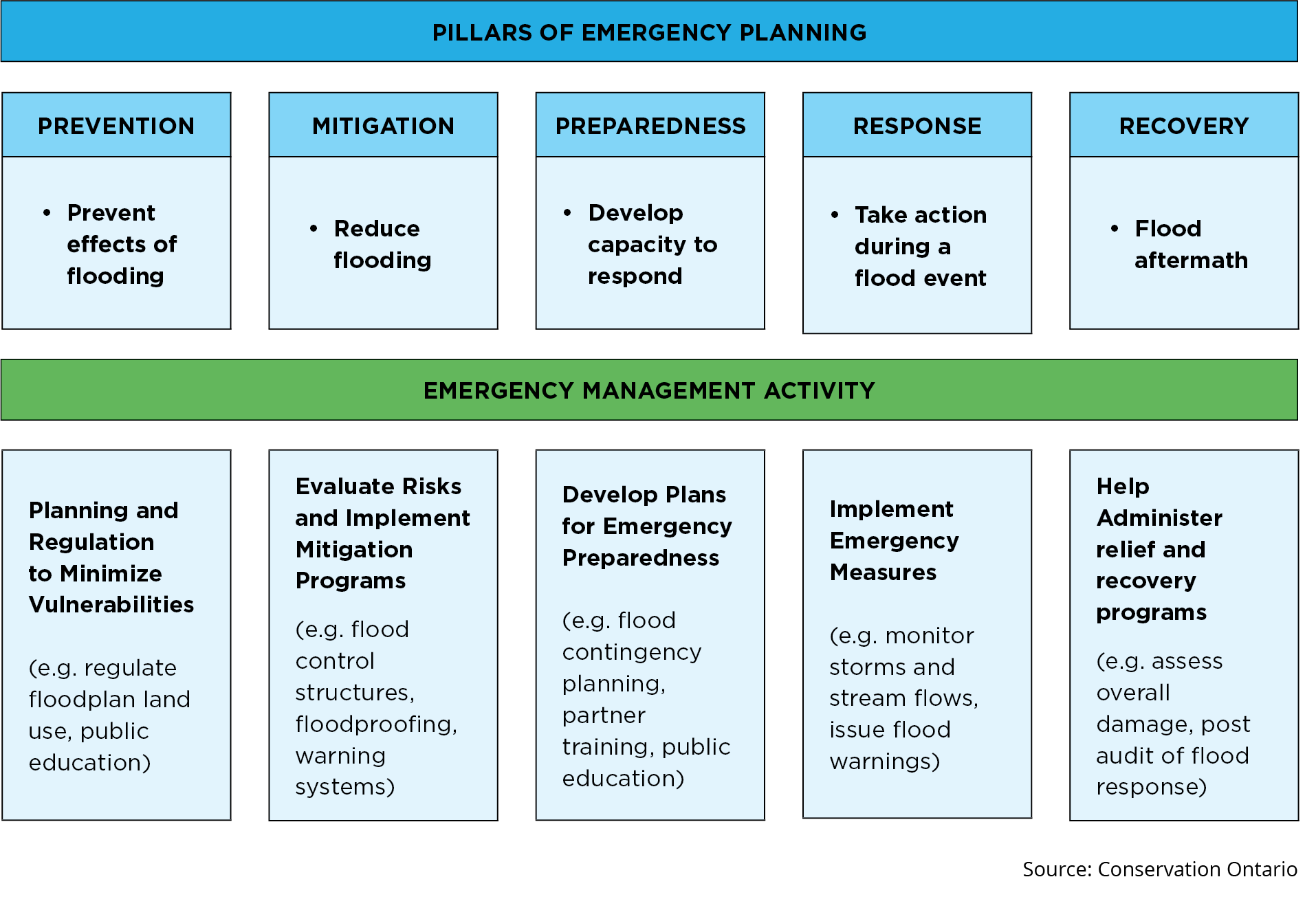

Jo-Anne Rzadki, Manager of Business Development and Partnerships at Conservation Ontario
Flooding has been the leading cause of public emergency in Ontario and conservation authorities are the first line of defense in prevention and reducing the impacts of these costly and devasting events. According to the Intact Centre on Climate Adaption at the University of Waterloo, the costliest impact of climate change affecting Canadians is residential basement flooding. Part of this is caused by the fact that almost four million people live in a floodplain.
Ontario’s 36 conservation authorities play a big role in helping to reduce or mitigate the risk of flooding and erosion across the province, particularly in or near towns and cities. They monitor and report on flood conditions issuing various levels of warnings for municipalities, businesses, and homeowners.
Conservation authorities, help to prevent flooding and erosion impacts from happening in the first place by developing floodplain mapping and providing flood risk information to municipalities, developers and others in order to promote proper land-use planning. Regulating new and existing development protects lives and property and reduces the cost of flooding to all levels of government. Conservation authorities also protect and restore important natural systems such as wetlands, trees and shoreline vegetation to help slow or absorb flood waters.
Conservation Ontario represents the network of the 36 conservation authorities and is pleased to collaborate with the IBAO to develop a RIBO-accredited eLearning course on this subject, Flood and Erosion Risk Management in Ontario.
Flooding and erosion are natural and important parts of healthy river and lake systems, however, the impacts of these events can be severe. The need for effective flood and erosion management is made clear by loss of life, property devastation and long-term social, emotional and economic disruption, as well as the staggering clean-up costs in the aftermath of a flood.
Ninety-five percent of Ontario’s population lives in a watershed managed by a conservation authority. This is close to 40% of the population of Canada. The local watershed expertise of conservation authorities helps Ontario to significantly reduce the risk of flooding and erosion compared to other parts of the country.
While good planning and preparation restrict development in flood-prone areas today, there are older towns, cities and infrastructure established prior to regulations that are still at risk from flooding. Conservation authorities help these property owners to flood-proof their properties as much as possible.
Roles and Responsibilities of Conservation Authorities
Managing the risk associated with flooding and erosion is a provincially delegated responsibility for conservation authorities under the Conservation Authorities Act. Their work is funded through a combination of municipal, provincial, federal and self-generated revenues.
Conservation authorities monitor and predict flood flows and water levels year-round, operate flood control structures and relay flood messages to local municipalities and emergency management officials. This information is used to keep people out of harm’s way in advance of potential flood and erosion events.
As watershed-based natural resource management agencies, conservation authorities rely on an integrated approach to reduce or prevent the risk of flooding and erosion.
Specifically, the flood management activities of conservation authorities include:
- Undertake floodplain mapping, modelling, and monitoring streamflow, rainfall and snowpacks
- Regulate development in flood prone areas in cooperation with municipalities and the Province
- Provide planning support and advice to municipalities to minimize flood impacts and issue warnings
- If able to, acquire important floodplain lands and flood vulnerable structures
- Operate over 900 dams, dykes, channels and erosion control structures

Conservation authorities bring added protection and benefits with their foundational watershed management activities which include: watershed-scale monitoring, data collection management and modelling, watershed-scale studies, plans, assessments and strategies, and watershed-wide actions including working with individual landowners and partners on stewardship initiatives that involves natural infrastructure like tree planting, wetland restoration, communications, and outreach and education activities.
Working Together with Brokers
Conservation Ontario and our conservation authority members encourage IBAO members to take the course so they can increase their understanding of flooding and erosion in Ontario and how it’s managed by conservation authorities and our municipal, provincial and federal partners. As a result, brokers will be more equipped to help their clients to access resources and information about how they can keep themselves and their families safe and reduce their risk of costly property damage. This includes contacting local conservation authorities to find out what and where the specific local hazards and risks are in your watershed.
Everyone has a role to play, including the insurance industry. We look forward to building good relationships between the insurance industry and Ontario conservation authorities and seeing the positive impact we can have together on our shared environment.
